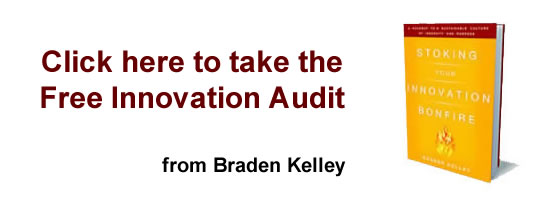A Fundamental Principle of Value Creation
The photo below illustrates one of the most fundamental principles of value creation. Have a look:
 The owner has bought a ‘cat tree’. This would be splendid, but the cat prefers sitting on the cardboard box!
The owner has bought a ‘cat tree’. This would be splendid, but the cat prefers sitting on the cardboard box!
Of course, the cat tree is not for the cat at all. It’s for the owner. I doubt the cat appreciates the paw-shaped seat for example. The designer thought it was cool and the owner agreed, but I think we are safe in saying that the cat is, at best, agnostic.
Experts build products and design services based on their own view of what is required. Often the result misses the mark, and does so at greater than the required cost.
GE had been trying for years to sell premium-priced ultrasound scanners in China. The problem was that 90% of hospitals couldn’t afford them, and after trying for ten years, GE’s ultrasound sales were a disappointing $5 million.
In response, the company designed a scanner just for the Chinese market. By focusing on essentials, the local team came up with a hand-held version for $15,000. Its performance wasn’t as good as the premium scanner, but it was affordable, easy to carry and easy to use – ideal for rural areas.
Between 2002 and 2008, GE’s ultrasound sales in China grew from $5 million to nearly $300 million.
And here’s an interesting twist: it turned out that people in developed markets liked the stripped-down scanners, too. GE now sells them in the U.S. and other developed countries for use in ambulances and operating rooms – previously untapped markets for which the premium scanners were over-engineered, and so impractical. (As I often say to audiences: users, not technologists or managers, determine the value of products.)
Questions to consider:
- Where are we incurring costs to deliver things – features, services, extras – that the customer isn’t noticing, or simply doesn’t care about?
- How well do we understand the job the customer is trying to do through using our product or service, and how well do we understand their criteria?
- Are our technical people indulging themselves rather than meeting user requirements?
- How might we advantageously differentiate ourselves by removing features from our offerings? Could we even earn a premium on the ‘less is more’ principle?
Finally, for those concerned about employee engagement and whether the organization makes it easy or difficult for employees to do their work, a more introspective question: Are we expecting our employees to work with the equivalent of cat trees, when they would get the job done more easily and happily with the cardboard box?
Wait! Before you go…
Choose how you want the latest innovation content delivered to you:
- Daily — RSS Feed — Email — Twitter — Facebook — Linkedin Today
- Weekly — Email Newsletter — Free Magazine — Linkedin Group
 Andy Bass is the founder and principal of BassClusker Consulting, and helps leaders to bring their strategic goals to fruition more quickly and completely, wherever possible using resources they already have. He has worked across a wide range of industries and sectors including professional services, technology, media, health, financial services, packaging, automotive and education.
Andy Bass is the founder and principal of BassClusker Consulting, and helps leaders to bring their strategic goals to fruition more quickly and completely, wherever possible using resources they already have. He has worked across a wide range of industries and sectors including professional services, technology, media, health, financial services, packaging, automotive and education.
NEVER MISS ANOTHER NEWSLETTER!
LATEST BLOGS
How Brexit Has Affected UK E-commerce Businesses
Photo by Zyro on Unsplash The popularity of online shopping was already growing at an impressive rate – and…
Read MoreOvercoming range anxiety: three tips for EV owners
Photo by Jenny Ueberberg on Unsplash In the last few years, electric vehicles (EVs) have become more and more…
Read More


